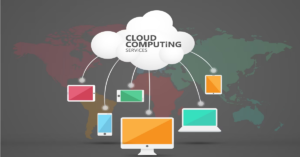As part of FINRA’s market infrastructure, this Optional Display Facility (ADF) displays market data. It is used by institutions for posting quotes and reporting trades.ADF stands for Optional Display Facility, as it allows organizations to report trades and post quotes.The purpose of it is for organizations to post quotes and report trades that don’t take place on regular exchanges. Off-exchange venues include dark pools, insider trades (where your broker or affiliate trades against you) or direct negotiations, where two parties meet over the phone and arrange trades. Exchanges should be avoided.
These trades must, of course, be reported to the consolidated tape (time and sales). Due to the fact that it did not occur on an exchange that automatically reports trades, it must be reported to a separate venue.
Deals reported to ADF are not subject to the SEC’s Regulation NMS National Best Bid and Offer rule, so they can differ significantly from current best bids and offers.Here’s where ADF comes in. As a result, such trade reports are possible.It is important to remember that ADF is not implemented by Exchange. Organizations can display quotes and report their trades on this display-only facility. ADF reported any trades that were executed elsewhere.There is, however, more to the ADF than meets the eye. They are a very small player when it comes to off-exchange trade reporting.
Alternative Display Facility (ADF) Vs. Trade Reporting Facility (TRF)
Off-exchange trade reporting infrastructure consists of two primary components: the Trade Reporting Facility (TRF) and the Alternative Display Facility (ADF).
FINRA runs the ADF, while the exchanges run the TRF.
Off-exchange trades are recorded in TRF 99.999% of the time. Dark pools, negotiated deals, insider trading, etc., are examples of these types of transactions. The TRF reports over-the-counter trades, that is, trades that do not take place on a lit exchange.
In the stock market, TRF is now the most dominant player, making ADF very insignificant.
The ADF operator, FINRA, reports that there are currently zero quoting broker-dealers on the platform. The only broker that uses ADF for trade reporting is JP Morgan.
TRF and ADF are not considered competitors. For ECNs who felt that NASDAQ’s algorithms favored NASDAQ market makers over ECNs, it was founded in 2002 with a specific, old concern; posting quotes on NASDAQ’s books couldn’t be done.
Since 2005, Regulation NMS has virtually supplanted the ADF and is rarely used.
Whale watching on ADF
Since ADF is used by JP Morgan exclusively for trade reporting, it seems odd that we would devote any time to this issue.
The massive liquidation of SPAC warrants in extended-hours trading happened on April 18, 2022, during a cold bear market for SPACs. An SPAC warrant is basically a foreign call option issued by the company that is offered to investors as a sweetener.
The intrinsic value of a SPAC warrant can be calculated like that of any call option. Buying these warrants below their intrinsic value is like getting free money, although SPAC warrants are usually not exercisable until the deal closes.
The arbitrage of mispriced SPAC warrants was adopted by many traders regardless of the structure.
It’s why many of them turned a blind eye to their montage that April evening when SPACs like McLaren Technology Acquisition Corp (MLAIW) sold nearly 300,000 warrants for a penny each. It is ridiculously expensive to trade warrant blocks.
This is very strange, since all these deals were printed on ADF.
The US stock market structure prevents you from knowing the story behind a trade. But hedge funds are widely believed to be required to liquidate portfolios of SPAC assets quickly and negotiate over-the-counter deals.
There were also many traders who were stunned. What happened? They bought warrants at better prices than reported, but the orders were never filled. The bids of these traders are listed in the order books of stock exchanges such as the NYSE. This trade was negotiated and never touched the exchange, so no buy orders were triggered. Due to the fact that these deals do not have to comply with the NBBO, they are perfectly legal.
It’s clear from these block trades that at least one large fund heavily involved in SPACs has liquidity problems, which could lead to more fire-sales, which would definitely be depressing for the SPAC market.
Bottom line
Taking advantage of this market structure can be tedious, and the information released there can be difficult to understand.
Because of this, few traders take the time to research, understand, and implement strategies based on this content. You can’t get as excited about it as you can about studying the latest chart patterns or technical indicators. In fact, that’s precisely what makes it so rewarding.
As a result, ADF is seldom used now, with only JP Morgan participating, so you cannot expect it to create a consistent trading strategy, but if you spot an opportunity, it can be very lucrative.



